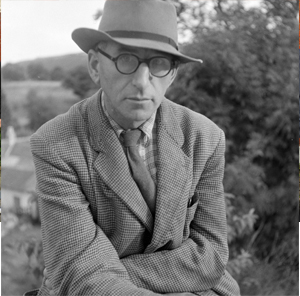BITE-SIZED HISTORY
Published in Issue 1 (January/February 2023), Volume 31BY DONAL FALLON

Above: Poet Patrick Kavanagh—early last year, Claddagh Records re-released his 1964 LP Almost Everything, with additional readings by, amongst others, President Higgins reading ‘Stony Grey Soil’ and Christy Moore reading ‘October’.
REBEL IRISHWOMEN
Last year, 2022, was an interesting one for Claddagh Records, the iconic label founded by Garech Browne in 1959. Revived in recent times, the label is dipping into its rich archival collections, the late Browne insisting that he ‘would like the recordings to be available to anyone interested in Irish music, poetry and the spoken word. They are no good to anyone where they are now.’ From the archives comes Rebel Irishwomen, a record featuring rare insights and performances by Kathleen Behan, Helena Moloney and Maud Gonne. Originally released as a 7in. record in 1966, it has now been expanded into an LP with new tracks from contemporary artists Landless and Niamh Bury. Earlier in 2022 the label re-released 1964’s Almost Everything by Patrick Kavanagh. Kavanagh’s record is now accompanied by readings of his work by prominent figures in Irish public life, including President Higgins reading ‘Stony Grey Soil’ and Christy Moore reading ‘October’. Claddagh Records will undoubtedly produce more gems.
CLÓ GAELACH SIGNS REPAIRED
Those with a keen sense of Irish historiography might recognise familiar names in some of the streets of the Tenters area in Dublin 8, a scheme dating from 1922 and the infancy of the new Free State and brought into being thanks to the pressure of Alderman Thomas Kelly, a keen amateur historian. Kelly’s influence ensured that the streets in this part of the Liberties would carry the names of chroniclers of the past. There’s Gilbert Road (in honour of the great historian of the capital J.T. Gilbert) and Petrie Road (for the antiquarian George Petrie), amongst others. To mark the centenary of the scheme, the green and white Cló Gaelach (old Irish script) street signs of the area have been perfectly restored by Dublin City Council’s Conservation Section. A recent episode of RTÉ’s Nationwide explored the centenary of the Tenters and how the scheme came into being.
RED PLAQUE SCHEME IN DERRY
Since 2017, the Fire Brigade Union’s Red Plaque Scheme has created memorials for firefighters who lost their lives in the line of duty. Most of these plaques are found across the United Kingdom, but some dot Northern Ireland too. The latest, unveiled there in November 2022, honoured firefighters Leonard McCartney and Lexie Wylie, killed in Derry’s Foyle Street during a building collapse in 1971. With a uniform style, the plaques are instantly recognisable. As FBU Secretary Matt Wrack noted, ‘It is vital that history is remembered in the spaces it was lived. Doing that ensures that the community can really understand what happened.’
ELLIS COURT RETURNS
The work of Dublin City Architect D.J. Freeman in the 1880s, Ellis Court formed the first public housing scheme of Dublin Corporation. Murray Fraser, author of a pioneering study on public housing in Victorian Ireland, has noted that, ‘Built in 1886–87 at a total cost of £27,920, the scheme contained 144 flats … the Benburb Street blocks were built to such a low sanitary and constructional standard that they needed constant remedial work’. This writer’s great-grandmother was a resident of the scheme. While condemned in their own day, they remain an important part of the story of Irish housing and have now been brought up to a brilliant standard by the Tuath Housing Association in conjunction with ORS architects. As they near completion, a passer-by will notice new balconies and modernised features.
1926 CENSUS
Great news for historians and genealogists alike with the announcement of the digitisation of the 1926 census, currently stored in 1,344 boxes by the National Archives of Ireland. Minister Catherine Martin has told the press that she is confident that it can be digitised ahead of its centenary. ‘Given the success of the digitised 1901 and 1911 census returns, I’m sure that the 1926 Census will be equally as popular and have a significant global reach once released. The census is a fundamental part of our national heritage and collective knowledge.’
Donal Fallon is the presenter of the Three Castles Burning podcast and the author of Three Castles Burning: a history of Dublin in twelve streets (New Island, 2022).
















